The adoption of digital technology has accelerated in the last five years to manage complexity, provide greater visibility and drive sustainable change. Four leading providers of that technology explained some of their most recent developments at this year’s Automotive Logistics and Supply Chain Europe conference in Bonn, Germany – Alps Alpine, FedEx, FreightVerify and s2 data & algorithms.
Ahmed Abdelhalim, BU manager for industrial IoT at Alps Alpine outlined what the electronic components maker was doing to enhance visibility on returnable packaging. Abdelhalim said the cost of handling packaging was eight times that of its material cost and that currently at least 10% of packaging assets were lost, and he outlined what the consequences of a lost container might be, ultimately a risk to production. Added to which, the absence of the correct container means resort to available disposable packaging, which adds to cost and is not sustainable.
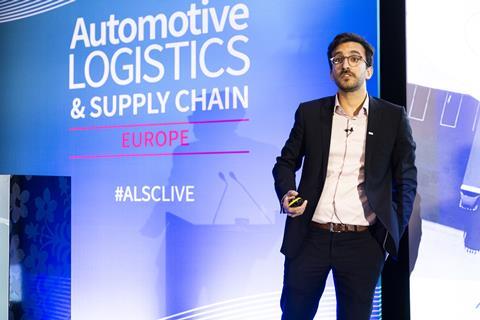
Greater visibility on packaging is therefore a priority for the automotive industry. That involves a need for greater collaboration across the supply chain given the range of stakeholders that are involved with handling the containers of parts, from OEM and supplier, to transport operator delivering the goods and the service network.
“This lack of collaboration adds a level of complexity rather than having one source of truth,” said Abdelhalim, adding that good data was needed to identify the bottlenecks.
Keeping tabs on containers
Alps Alpine is providing an asset-tracking tool that provides full end-to-end traceability of the overall system. According to Abdelhalim, a user can reduce the packaging leaks and asset losses, and will benefit from a fully automated booking of containers going to the carmaker and leaving it. With that information the user can anticipate shortages and take action to remedy the problem.
He said the technology is simple to apply, comprising of a tracking device attaches straight on to the container and gives its location and status. Data is sent through mobile communications and uploaded to the cloud, which provides intelligence on container utilisation. It then provides data to the user. “You have one source of truth regardless of where the carmaker or distributor are,” said Abdelhalim.
More importantly, it is a plug and play solution, according to Abdelhalim, meaning it starts working immediately on application. The device and the system it feeds into are smart enough to provide data on the container as soon as it starts moving throughout the lifetime of its movement. “Then you can predict the bottlenecks and that is where you get return on investment,” said Abdelhalim. For between 6-12 months you can see the value added by adopting this solution on the container.”
Typical use cases indicate significant savings for reduced loss rate. In one example of a pool of 600,000 units the tool garnered a saving of €12m after one year because of 50% reduction in loss. The reduction of disposable packaging can yield a saving of €1.1m and optimising fleet size can bring €2.07m by reducing buffer units by 20%.
Intelligent ETAs
Over at FreightVerify, Christine Krathwohl, vice-president of global business development, highlighted how its data-driven ETAs provide visibility for the movement of inbound parts and outbound vehicles across all modes of transport and use machine learning to predict disruption. The company, which is expanding in Europe, is also now providing track and trace services to the aftermarket.
“We provide real-time visibility, whether it be a component or VIN, at all times with the location of that material or VIN, and with an ETA,” said Krathwohl. “Our innovation is a real-time intelligent ETA that continues to update along the journey.”
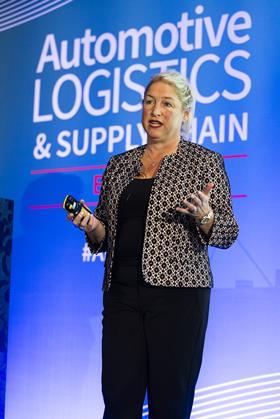
According to Krathwohl, compared to traditional services that would provide two to three ETA updates along the journey from factory to customer, FreightVerify performs hundreds of calculations along the journey, providing real-time updates throughout.
Combining supply chain automation and AI software, the real-time modelling of the supply chain gives shippers, dealers and service centres all round visibility. FreightVerify maintains that its intelligent ETAs are “the cornerstone for logistics, sales and marketing teams at OEMs” who organise deliveries of vehicles including door-to-door deliveries. The ETAs are also useful to parts supplier, claims organisations and aftermarket divisions ensuring deliveries are on schedule.
“A lot of OEMs want to measure ETA accuracy, which reflects how well [their] network is performing,” said Krathwohl. “The important thing is, how do you measure that first ETA and then how do you measure all [the following] ETAs and let your customer know what the most recent one is based on conditions. That includes parts going into you just-in-time manufacturing, cars going to your end customer or dealer, or now the aftermarket world.”
Krathwohl pointed to the fact that service parts provided the most revenue for dealerships and the FreightVerify tool supported efficient performance and service by providing accurate knowledge of when the service part in demand would arrive.
FrieghtVerify is now providing OEMs with real-time updates as well as launching VIN View to give 10,000 dealers a view of where their vehicles are every day, and in the last week month the company has also launched Part View, which allows dealers to see where their service parts are in the delivery process.
360 view of delivery
FedEx is also focused on how to increase shipment visibility and predictability, as well as customised services, all against a background of reducing carbon emissions. Markus Ramirez, managing director of global sales for the Automotive Solutions division, highlighted a new tool called FedEx Surround Select, which aims to enhance timely deliveries with precision by cutting out excess inventory and inefficiency, as well as helping customers to predict delays before they happen.
“We focus on high performance in delivering the service but with such a complex network the issue is that delays are constant we have to battle,” said Ramirez, adding that external factors such as weather, strikes, accidents and acts of war all had to be factored in.
“Our innovation is essentially incorporating these internal and external factors and presenting them in an easier and more consistent way to users.”
One of those users could be a car dealer able to see incoming shipments and thus able to schedule workshop operations based on the accurate arrival time of the part.
Ramirez said the tool collected data from multiple sources and presented it in a simple comprehensive way enabling a company to see the status of all of its shipments globally or to use the interface to connect to different specific systems. The system is live and FedEx has been using it internally for 18 months, with a trial phase now underway in Europe.
“We have a couple of interactive dashboards [working on] real-time data and it works by exception management so you don’t have to look at all your shipments, only the ones that have an issue,” said Ramirez. “We are able to customise a lot of views to make them dedicated to our customers [and issue] predictive alerts.”
Those custom views include clearance status, delivery exceptions and transit time delays.
Ramirez emphasised that tool helped reduce complexity, provide maximum visibility of all shipments and provided predictive alerts, proactive decision making through an easy-to-use interface.
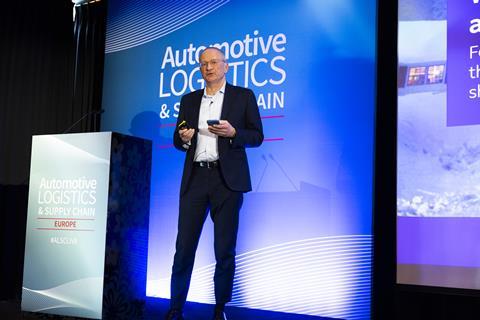
Figuring out the supply chain
Utilising modern mathematics and advanced technology s2 data & algorithms is a start-up tech firm that is helping OEMs and tier suppliers to develop industrial applications and operational process excellence specifically around optimising transport. Its CEO Dr Stefan Kremsner explained how the company was able to utilise algorithms and optimisation techniques to make the automotive supply chain more sustainable, while making the most out of every transport and automating the whole process.
Looking at inbound parts and material shipments there is a big difference between a strategic transport plan and the reality of full truckload (FTL), less-than-truckload (LTL) and milkrun operations, according to Kremsner. Operations are volatile from the production line to the warehouse, all which affects deliveries. Inbound loads actually range anything between 48%-72% utilisation and are far from being optimal.
“In the long run this variation changes the way that every transport is utilised and every metre or cube of space wasted means we lose efficiency, we lose money and we lose CO2 emissions,” said Kremsner.
The start-up helps customers look at route and tariff optimisation, and load optimisation, and combine that data with inventory to get the most out of planning.
“We not only have to strategically or tactically plan, we have to be dynamic and daily operative to optimise our transport,” Kremsner. “We must also not just look at ourselves, we have to look at whole supply chain and ask our suppliers can they deliver on time? If we optimise a plan and ask to bring in more material can the supplier also confirm and make sure this happens as well?”
Looking at part numbers and dates s2 data & algorithms connects the information with the whole transport network to make sure that each trailer or seafreight container is optimised to the maximum. Kremsner pointed to two use cases where improvements were tangible.
With one premium carmaker, the company was able to save 20% in costs and CO2 emissions on FTL/full container load (FCL) shipments. The carmaker provided data and s2 used it algorithms to plan ahead for six weeks identifying where it could leverage and consolidate loads to fully increase the load space on the trucks.
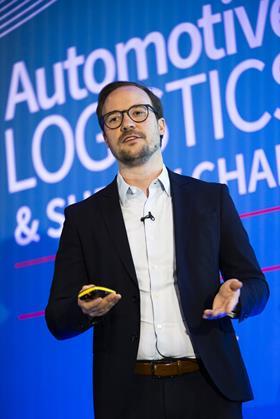
“We then integrated this into their SAP, planning on an intra-day level, shifting materials and using mathematics to make it operationally feasible and it turned out we could save up to 20% of cost and CO2 emissions,” said Kremsner.
In a second use case with tier one supplier Yanfeng, s2 optimised FTLs and milk runs across the whole network, planning every transport down to the smallest number to get the most out of capital lockup. “By this dynamic optimisation we basically increased the utilisation by 21.3% saving every fifth inbound transport.
“There are a lot of things we can do in the supply chain, there are a lot of algorithms that can help, a lot of new innovations taking place. It is not just about gathering data for insight, it is about being actionable and doing the right task to achieve those potentials,” said Kremsner.


















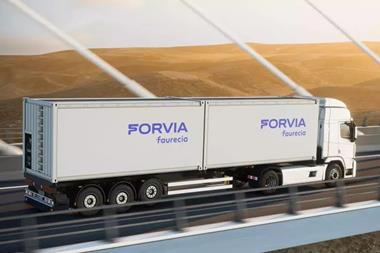
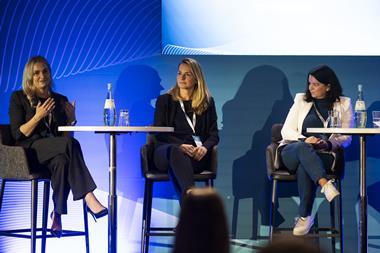
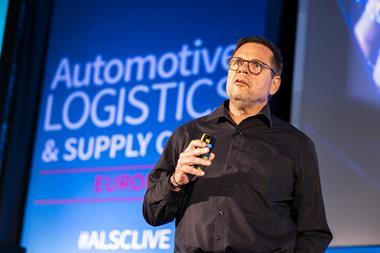

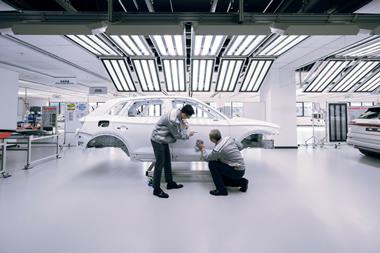



No comments yet